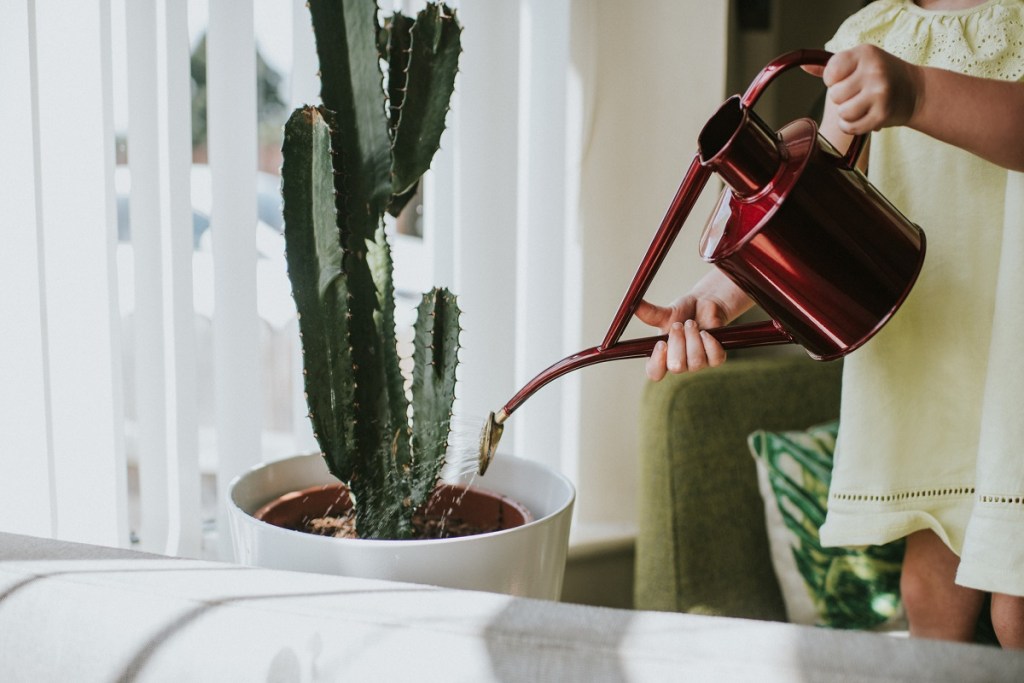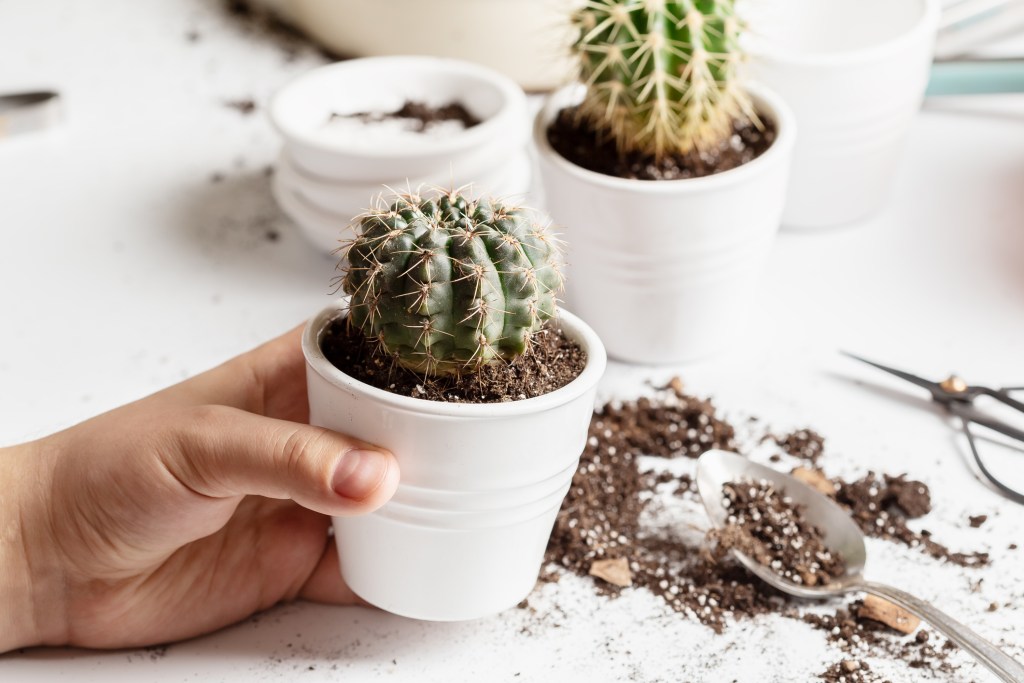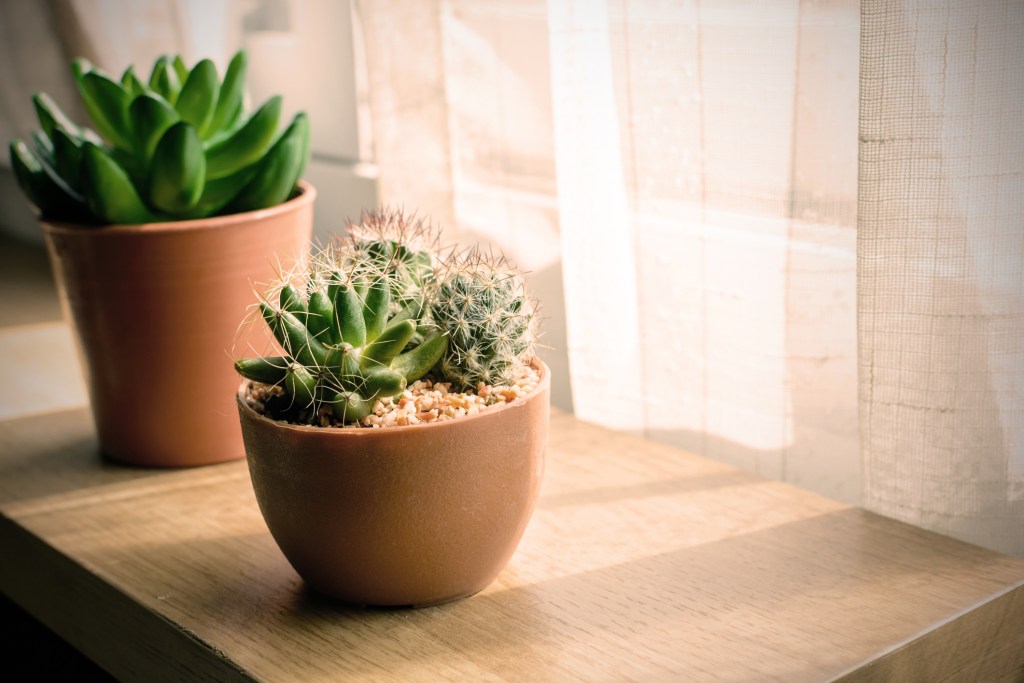Cacti might have a reputation for being hardy, but that doesn’t mean that they can’t get sick. They actually have specific needs in order to thrive:, such as sparse watering, well-draining cactus soil, and of course, bright light. Overwatering is a common problem with cacti, especially for first-time cactus owners who are used to watering plants more frequently. While overwatering can cause issues, this doesn't mean your cactus will instantly die.
If you notice your cactus has been overwatered, don't panic! If you can still see signs of life, you might still be able to save it. Rescuing an overwatered cactus is very much a feasible undertaking. The process is fairly simple, but it does take patience. Here's what you need to know about how to fix an overwatered cactus.

Check the roots of your cactus
The first step is to assess how much overwatering damage you’re working with.
Step 1: Look for brown spots on the cactus or a pungent smell coming from the soil.
These are signs of rot, and good indicators that you need to start repairing the damage.
Step 2: Roll a thick newspaper around your plant, to protect your hands from the cactus' spines.
Wearing gardening gloves can also help, especially if your cactus has larger spines.
Step 3: Remove the cactus from its pot.
Be gentle to avoid damaging the cactus. Overwatering can cause a cactus to become softer and squishier, making it easier to damage.
Step 4: Tip it over and inspect the roots.
White roots are healthy, while brown roots are rotting. The more white roots you see, the better your plant's odds are.

Remove rotting stems and roots
Black or brown spots and mushy stems are telltale signs of an overwatered cactus due to a fungal infection in the soil. If you notice these physical symptoms, it’s time to act. Here's what to do:
Step 1: Cut the damaged sections out with a sharp, clean knife.
The knife needs to be clean to avoid spreading any bacteria to your cactus. If the damage is extensive, you may need to do the reverse, cutting the living parts away from the rot, essentially propagating your cactus.
Step 2: Wear gloves to protect your hands.
Step 3: Leave the cactus or the cactus cuttings to dry for a few days to a week.

Repot your cactus into fresh cactus soil
Once they're dry, you'll need to repot the cactus or cactus cuttings.
Step 1: Throw out the old soil instead of reusing it.
The old soil could still carry the bacteria or fungi that caused the rot, so it's important not to reuse it. If absolutely necessary, you could try sterilizing the old soil. However, it is safer to use fresh soil.
Step 2: Use a clay pot with drainage holes.
Clay is a more porous material, so it is typically more forgiving of excess water. Having a drainage hole or holes in the bottom of the pot is crucial, so that extra water has somewhere to escape to instead of pooling at the bottom.
Step 3: Add cactus soil to the pot(s), position your cactus or cactus cuttings, and fill the space around them with more soil.
Step 4: Apply rooting powder to your cuttings to help them develop roots faster.
Step 5: Water the cactus or cuttings thoroughly.
Although it can be nerve-wracking to water them after rescuing them from overwatering, they do still need water to live. Letting them dry out before replanting them prevents this step from causing them additional harm.

Avoid watering until your soil completely dries out
After you carefully rehome your cactus, prevention is key when it comes to maintaining a happy plant.
Step 1: Place your cactus somewhere warm with bright, direct light.
Step 2: Avoid watering your cactus when the soil is still damp.
Step 3: Reduce watering to once a month or less during winter.
Growth slows down during cold weather, so they use less water. Some cacti can go the entire cold weather season without being watered!
Step 4: Dump out any water that pools on the surface instead of sinking into the soil.
Step 5: Err on the side of underwatering if you're unsure.
Cacti have adapted to dry weather by storing water in their fleshy stems and leaves.
There’s usually a learning curve when it comes to properly watering a cactus. If you’re a chronic over-waterer and find yourself with a squishy and browning cactus, don’t despair: You can rescue your plant if it has any viable green tissue. After removing all of your damaged roots and stems, you can enjoy your healthy comeback plant! Failing all that, here are some plants that might fit better with your watering routine.
Editors' Recommendations
- Everything you need to know about trailing succulents care for lush, thick growth
- How to pick the perfect orchid pots for healthy blooms
- 4 creative ways to arrange succulent plants
- 5 easy-care spider plant varieties perfect for any home garden
- Your guide to rubber plant care and the best varieties to add to your home



